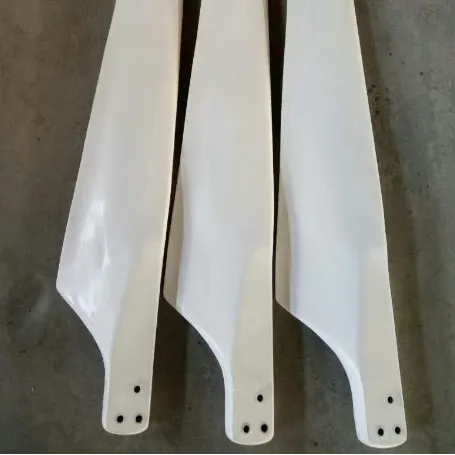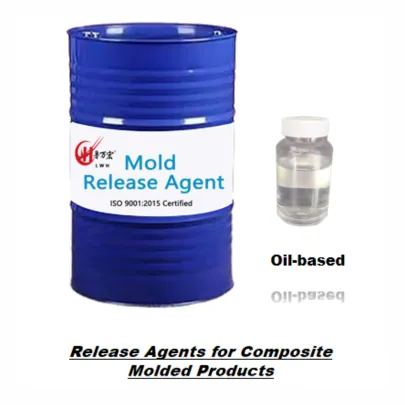Understanding the Essential Role of Release Agents in Epoxy Applications
In the world of manufacturing and crafting with epoxy resins, success often hinges on the proper use of release agents. These specialized compounds play a crucial role in ensuring clean part removal and maintaining surface quality in various casting and composite applications. As industries continue to expand their use of epoxy resins, the demand for effective release agents has grown significantly, leading to innovations in formulation and application techniques.
From industrial manufacturing to artistic resin casting, epoxy resin release agents serve as the invisible heroes that prevent bonding between the cured resin and the mold surface. Their proper selection and application can mean the difference between a perfect finished product and a costly failure, making them an indispensable tool in any epoxy working environment.

The Science Behind Release Agent Technology
Chemical Composition and Mechanism of Action
Modern epoxy resin release agents are carefully engineered products that combine multiple chemical compounds to achieve optimal release properties. The primary components typically include silicones, waxes, or fluoropolymers, each selected for their specific non-stick properties and compatibility with epoxy systems. These agents work by creating an ultra-thin, molecular barrier between the mold surface and the epoxy resin.
The molecular structure of release agents is designed to have low surface energy, which prevents the epoxy from forming strong chemical or mechanical bonds with the mold surface. This scientific approach ensures that even complex shapes can be demolded without damage to either the finished part or the mold itself.
Types of Release Agent Formulations
Different applications require specific types of epoxy resin release agents. Solvent-based formulations offer excellent coverage and quick drying times, making them popular in production environments. Water-based alternatives have gained traction due to environmental considerations and workplace safety requirements. Semi-permanent release agents provide multiple releases before reapplication, while sacrificial agents need to be applied before each use but often offer superior release properties for challenging applications.
The choice of formulation depends on factors such as the mold material, production volume, cure temperature, and specific requirements of the final product. Understanding these variations helps manufacturers and craftspeople select the most appropriate release agent for their specific needs.
Application Techniques and Best Practices
Surface Preparation and Cleaning
Successful use of epoxy resin release agents begins with proper surface preparation. The mold surface must be thoroughly cleaned to remove any contaminants, previous release agent residue, or debris. This typically involves a multi-step cleaning process using appropriate solvents or cleaners designed for mold surfaces. The cleanliness of the mold directly impacts the effectiveness of the release agent and the quality of the final part.
After cleaning, the surface must be completely dry before applying the release agent. Many professionals use lint-free cloths or specialized applicators to ensure even coverage without leaving behind any fibers or particles that could compromise the surface finish.
Application Methods and Coverage Control
The application of epoxy resin release agents requires precision and attention to detail. Spray application offers quick coverage for large surfaces, while wiping or brushing methods provide better control for intricate molds. Multiple thin layers often prove more effective than a single thick coat, allowing for better coverage and more reliable release properties.
Temperature and humidity conditions during application can significantly impact the performance of release agents. Many professionals maintain specific environmental conditions in their work areas to ensure consistent results. Proper drying or curing time between coats is essential for building an effective release layer.
Industrial Applications and Performance Optimization
Manufacturing Process Integration
In industrial settings, epoxy resin release agents must integrate seamlessly into existing manufacturing processes. Automated spray systems and specialized application equipment help maintain consistency in high-volume production environments. The release agent application process must be carefully timed to maintain production efficiency while ensuring adequate coverage and preparation time.
Quality control measures, including regular testing of release effectiveness and surface finish quality, help optimize the use of release agents in manufacturing operations. Documentation and standardization of application procedures ensure consistent results across different production runs and operators.
Performance Monitoring and Troubleshooting
Regular monitoring of release agent performance helps identify potential issues before they impact production. Common problems such as incomplete release, surface defects, or contamination can often be traced back to improper application or maintenance of release agents. Establishing clear procedures for performance evaluation and maintenance helps prevent these issues.
Advanced monitoring techniques, including surface analysis and quality control testing, provide valuable data for optimizing release agent usage. This information helps manufacturers adjust their processes and formulations to achieve better results while minimizing waste and reducing costs.
Environmental and Safety Considerations
Workplace Safety Protocols
The safe handling of epoxy resin release agents requires proper training and protective equipment. Ventilation requirements, personal protective equipment (PPE), and proper storage procedures must be clearly defined and strictly followed. Regular safety training and updates help ensure all personnel understand and comply with these requirements.
Material Safety Data Sheets (MSDS) for release agents must be readily available, and emergency procedures should be established for handling spills or exposure incidents. Many facilities are now moving toward less hazardous formulations to improve workplace safety while maintaining performance standards.
Environmental Impact and Sustainability
The environmental impact of release agents has become an increasingly important consideration in their selection and use. Modern formulations often feature reduced VOC content and improved biodegradability compared to traditional products. Many manufacturers are now offering eco-friendly alternatives that maintain performance while reducing environmental impact.
Proper disposal procedures for used release agents and related materials must be established and followed to minimize environmental impact. Recycling programs and waste reduction initiatives help companies maintain environmental compliance while potentially reducing costs.
Frequently Asked Questions
What are the key factors in selecting an epoxy resin release agent?
The selection of an appropriate release agent depends on several factors including the mold material, operating temperature, production volume, and specific requirements of the final product. Consider also the ease of application, number of releases per application, and any environmental or safety requirements specific to your operation.
How often should release agents be reapplied?
The frequency of reapplication depends on the type of release agent used and the specific application conditions. Semi-permanent release agents may provide multiple releases before requiring reapplication, while sacrificial agents need to be applied before each use. Regular monitoring of release effectiveness helps determine optimal reapplication intervals.
Can release agents affect the surface finish of epoxy parts?
Yes, release agents can impact the surface finish of molded parts. Proper selection and application of release agents is crucial for maintaining desired surface characteristics. Over-application or using the wrong type of release agent can result in surface defects or transfer of the release agent to the molded part surface.
What are the best practices for storing epoxy resin release agents?
Release agents should be stored in their original containers in a cool, dry place away from direct sunlight and heat sources. Proper sealing of containers prevents contamination and evaporation. Follow manufacturer recommendations for storage temperature ranges and shelf life limitations to maintain product effectiveness.

